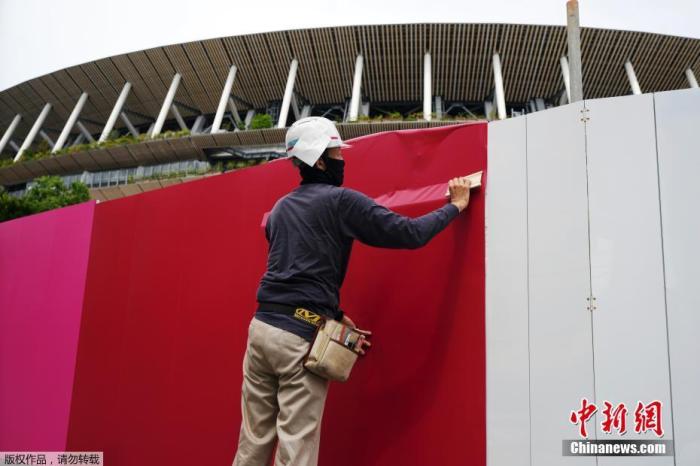China News Service, June 12th. According to Kyodo News Agency of Japan, the Tokyo Olympic and Paralympic Games Organizing Committee gave an estimate of the flow of people during the Olympics at the New Crown Countermeasures Expert Meeting on the 11th local time. According to the current plan, visits The spectators at the Tokyo competition venues are expected to reach up to approximately 225,000 in a single day.
On June 2nd, local time, Tokyo, Japan, the construction of facilities and related preparations for the Tokyo Olympic venues in Tokyo, Japan continued.
The Tokyo Olympic Organizing Committee stated on the 2nd that more than 10,000 people have resigned as volunteers for the Olympic Games, but the reduction of Olympic volunteers will not affect the operation of the event.
The Tokyo Olympic Organizing Committee revealed that the total number of tickets sold is more than 4 million, which is equivalent to about 42% of the capacity of all competition venues.
The Japanese government and the Tokyo Olympic Organizing Committee will finalize the maximum number of spectators within this month.
In view of the concern of experts that the flow of people accompanying the admission of spectators may lead to the expansion of the epidemic, the Tokyo Olympic Organizing Committee has given specific data.
According to estimates, there are about 250,000 people who visit Tokyo from outside the metropolis for sightseeing or business trips that are not related to the Olympics, and about 1.94 million people go to work or school in Tokyo from outside the metropolis.
The Tokyo Olympic Organizing Committee’s Olympic Games Organizer Nakamura Hidemasa pointed out: “Tokyo is a city with a population of tens of millions. If various people become part of the flow of people due to certain economic activities, 225,000 (audiences) may be only a small part. The admission of spectators has a limited impact on the increase in personnel exchanges.
It was also reported at the meeting that the survey results stated that assuming that 95% of the audience wear masks and the implementation of measures such as ensuring seat spacing, the risk of infection is reduced by 94% compared with no measures.
(Finish)

